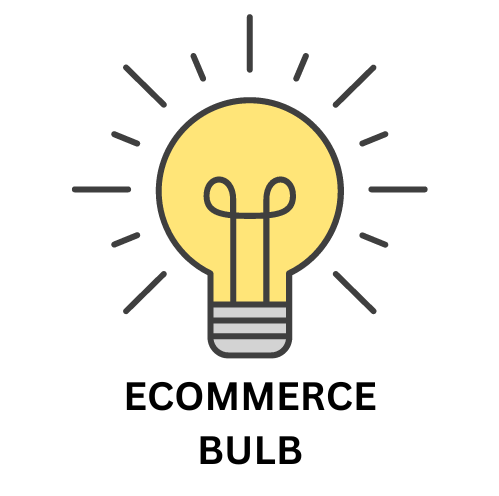
In order to decide which ecommerce platform to use, BigCommerce vs Ecwid. A detailed comparison between features must be thoroughly done. If you want to decide which eCommerce platform to choose, there are many things to consider.
These are some examples of these factors:
- Cost.
- SEO friendliness.
- Page load speed.
- Canonical website URL.
- Indexing Control.
- Customizable HTML capabilities.
- Sitemap Generator.
- Integration with Google Analytics.
- Product Tagging and Categorization.
- Batch Uploading.
- Mobile Optimization.
- Built-in Blogging and Marketing Features.
- Social Sharing Buttons.
- Content Management Capabilities.
- Discount and promotion code tools.
- Easy to use Checkout.
- Reporting tools and custom reports.
- Integration of email marketing tools.
- Multiple payment options.
- Flexibility to add new eCommerce features.
- Exclusive features.
- Cons and pros.
Here we’ll discuss these factors to help you decide which platform is better for you, Ecwid or BigCommerce. And at the end of the discussion, we’ll recap and make a comparison for the scores of all these points to find out which eCommerce platform has the higher score, so that you’ll have a good view about both of them.
Pricing (BigCommerce vs Ecwid):

Ecwid vs BigCommerce Cost – Does Ecwid Charge Fees? Pricing (BigCommerce vs Ecwid)
When comparing BigCommerce and Ecwid pricing, it’s important to consider not just the base prices but also the total cost of ownership (TCO) including potential transaction fees, app subscriptions, and development costs. Here’s a breakdown:
BigCommerce:
- Base plans: Range from $29.95/month for the Standard plan to $399.95/month for the Pro plan. Each plan offers increasing features and limitations on sales volume and online store traffic.
- Transaction fees: 1.5% to 2.0% depending on your plan, added on top of your payment processor’s rates.
- App marketplace: Extensive apps can extend functionality, but most require monthly or annual subscriptions, adding to your costs.
- Development costs: If you require custom features beyond apps, you’ll need to factor in developer fees.
Ecwid:
- Free plan: Offers basic features for small businesses with limited sales volume.
- Paid plans: Range from $15/month for the Venture plan to $99/month for the Unlimited plan. Each plan provides increasing features and higher sales volume allowances.
- No transaction fees: Ecwid does not charge additional transaction fees beyond your payment processor’s rates.
- App marketplace: Smaller than BigCommerce’s, but essential features are often available in the paid plans or at lower costs.
- Development costs: Similar to BigCommerce, custom development will involve additional costs.

SEO Capabilities (BigCommerce vs Ecwid):

Both BigCommerce and Ecwid offer built-in SEO tools to help your online store rank higher in search engine results pages (SERPs). However, their capabilities differ in terms of depth, user-friendliness, and flexibility. Here’s a breakdown to guide your decision:
BigCommerce:
Strengths:
- Built-in tools: Offers features like meta tag optimization, sitemap generation, URL redirects, and mobile-friendly design, all crucial for basic SEO practices.
- Content management system (CMS): Provides control over page titles, descriptions, and website content, allowing you to optimize for relevant keywords.
- App marketplace: Several SEO-specific apps and integrations offer enhanced optimization capabilities like image optimization, structured data markup, and link building.
- Scalability: Higher-tier plans provide advanced SEO tools like canonical tags and robots.txt editor for more granular control.
Weaknesses:
- Limited control: Pre-built templates and themes might offer less design flexibility for optimal SEO elements.
- App reliance: Many advanced SEO features require paid app subscriptions, increasing your costs.
- Steeper learning curve: Mastering all built-in features and app integrations might require some technical knowledge.
Ecwid:
Strengths:
- User-friendly: Simple interface makes it easy for beginners to manage basic SEO settings like meta tags and descriptions.
- CNC URLs: Automatically generates clean and search-engine-friendly product and category URLs.
- Microdata markup: Supports schema.org markup to provide rich information about your products to search engines.
- Mobile-optimized: Ensures your store showcases well on mobile devices, a crucial SEO factor.
Weaknesses:
- Limited flexibility: Less control over design and page structure compared to BigCommerce, potentially impacting advanced SEO optimization.
- Fewer built-in tools: Lacks features like robots.txt editor and canonical tags found in BigCommerce’s higher tiers.
- Limited app integrations: Smaller app marketplace offers fewer options for advanced SEO functionalities.
PageLoad Speed (BigCommerce vs Ecwid):

Page load speed is critical for eCommerce as it directly impacts user experience, conversion rates, and SEO ranking. Choosing the platform with the best page load speed can significantly impact your online store’s success. Here’s a comparison of BigCommerce and Ecwid’s page load speed:
BigCommerce:
- Strengths:
- Powerful server infrastructure optimized for high-traffic websites.
- Built-in caching mechanisms to speed up page delivery.
- Content Delivery Networks (CDNs) integrated with higher-tier plans for geographically distributed content delivery.
- App marketplace offers optimization apps like image compression and lazy loading.
- Weaknesses:
- Pre-built themes and page templates might impact speed if not optimized.
- Reliance on apps for advanced optimization can add complexity and potential cost.
- Higher-tier plans with enhanced speed features come with increased costs.
Ecwid:
- Strengths:
- Lightweight architecture that inherently leads to faster page loads.
- Server-side rendering ensures faster initial page loads.
- Automatic image optimization reduces page size and improves speed.
- No need for expensive CDN integrations as content is already cached globally.
- Weaknesses:
- Limited control over page structure and design elements might hinder advanced speed optimization.
- Fewer app integrations for further speed optimization compared to BigCommerce.
- May not scale as well for high-traffic websites without additional configuration.
Canonical Website URL (BigCommerce vs Ecwid):

Choosing the right eCommerce platform for handling canonical website URLs involves understanding how each platform manages duplicate content and helps you present the preferred version to search engines. Here’s a breakdown of BigCommerce and Ecwid’s capabilities:
BigCommerce:
Strengths:
- Built-in canonical tag editor: Allows manual assignment of canonical URLs for pages and products, giving you complete control over search engine prioritization.
- Automatic canonicalization: BigCommerce automatically assigns canonical URLs for certain situations like product variations and dynamic URLs, reducing potential duplication issues.
- App integrations: Several apps in the marketplace offer advanced canonicalization features, like automated tagging for specific scenarios or bulk editing tools.
- Scalability: Higher-tier plans offer more granular control over canonicalization settings, catering to complex website structures with numerous duplicate content possibilities.
Weaknesses:
- Manual setup: Editing canonical tags requires specific knowledge and understanding of SEO best practices.
- App reliance: Advanced features might require paid app subscriptions, increasing your costs.
- Steeper learning curve: Utilizing the full potential of canonicalization options might be challenging for beginners.
Ecwid:
Strengths:
- Automatic canonicalization: Ecwid automatically assigns canonical URLs to products and pages, minimizing your need for manual intervention.
- User-friendly interface: Easy-to-navigate settings allow basic canonicalization adjustments without extensive technical knowledge.
- Mobile-friendly: Ecwid automatically canonicalizes mobile and desktop versions of your pages, ensuring consistency for search engines.
- Cost-effective: Built-in canonicalization features are available in all plans, eliminating the need for additional app subscriptions.
Weaknesses:
- Limited control: Automatic settings offer less flexibility for complex website structures or situations requiring specific canonicalization strategies.
- Fewer customization options: No manual tag editing functionality, restricting you to Ecwid’s default rules.
- Scalability: Might not meet the needs of very large websites with intricate content duplication challenges.
Indexing Control (BigCommerce vs Ecwid):

Choosing an eCommerce platform that offers control over website indexing is crucial for optimizing your search engine visibility and directing crawlers to prioritize the pages and content you deem most important. Here’s a comparison of BigCommerce and Ecwid’s indexing control capabilities:
BigCommerce:
Strengths:
- Robots.txt editor: Provides direct control over which pages and files your website blocks from search engine crawling.
- Meta robots tags: Allows you to specify indexing instructions for individual pages or sections using noindex, nofollow, and other directives.
- App integrations: Several apps in the marketplace offer advanced indexing control functionalities, like bulk editing robot directives or managing sitemaps for improved crawling efficiency.
- Granular control: Enables precise targeting of specific content elements for indexing or exclusion, catering to complex website structures and SEO strategies.
Weaknesses:
- Technical knowledge required: Utilizing robots.txt and meta robots tags effectively requires understanding of SEO best practices and potential crawling implications.
- App reliance: Advanced features might require paid app subscriptions, adding to your costs.
- Steeper learning curve: Mastering the full potential of indexing control options might be challenging for beginners.
Ecwid:
Strengths:
- Automatic indexing: Ecwid automatically prioritizes indexing of product and page content, ensuring essential crawlable elements are readily accessible to search engines.
- User-friendly interface: Simple settings allow basic control over robots.txt and meta robots tags without in-depth technical knowledge.
- No additional costs: Built-in indexing control features are available in all plans, eliminating the need for app subscriptions.
- Easy setup: Suitable for beginners who want hassle-free indexing without advanced configurations.
Weaknesses:
- Limited control: Offers less flexibility compared to BigCommerce, making it difficult to target specific content for exclusion or prioritize crawling for complex websites.
- Predefined directives: Limited options for customizing robots.txt and meta robots tags, restricting precise control over indexing behavior.
- Scalability: Might not offer enough control for very large websites with intricate indexing needs.
Customizable HTML Capabilities (BigCommerce vs Ecwid):

When it comes to customizing your online store with HTML, both BigCommerce and Ecwid offer different levels of flexibility and control. Here’s a breakdown to help you choose the platform that best suits your needs:
BigCommerce:
Strengths:
- Full HTML access: Provides direct access to edit theme code and inject custom HTML anywhere in your storefront.
- Theme editor: Offers a visual interface for making basic HTML edits without needing to code directly.
- App integrations: Many apps in the marketplace extend HTML capabilities further, adding custom product templates, blog layouts, and other functionalities.
- Developer-friendly: Ideal for web developers or users comfortable with coding who want complete control over website design and functionality.
Weaknesses:
- Technical knowledge required: Editing raw HTML and theme code requires understanding of web development principles and potential consequences of modifications.
- Less beginner-friendly: The visual editor is limited, and full HTML access can be daunting for users without coding experience.
- Higher maintenance: Customizations might require ongoing maintenance and updates as themes and platform evolve.
Ecwid:
Strengths:
- User-friendly: Simple interface allows for basic HTML edits through theme customization options without needing to code.
- Pre-built sections: Offers a drag-and-drop selection of pre-designed sections with built-in HTML, reducing the need for manual coding.
- Widgets and integrations: Numerous widgets and integrations provide additional functionalities with pre-written HTML, simplifying customization without extensive coding.
- Cost-effective: Built-in customization options and theme integrations minimize the need for paid apps or developer assistance.
Weaknesses:
- Limited control: Offers less flexibility compared to BigCommerce’s raw HTML access, restricting highly customized designs or complex functionalities.
- Predefined structure: Relies on pre-built sections and widgets, limiting the freedom to design from scratch with pure HTML.
- Scalability: Might not be suitable for highly complex websites requiring extensive HTML modifications and custom functionalities.
Sitemap Generators (BigCommerce vs Ecwid):

Choosing an eCommerce platform requires considering diverse aspects, and sitemap generation is a crucial one for SEO. Both BigCommerce and Ecwid offer built-in sitemap capabilities, but understanding their strengths and weaknesses can help you decide which platform best suits your needs.
BigCommerce:
Strengths:
- Automatic sitemap generation: BigCommerce automatically generates and updates sitemaps for product pages, category pages, blog posts, and other relevant content, minimizing manual effort.
- Customizable options: You can configure the sitemap settings to include or exclude specific pages, define change frequencies, and prioritize content for crawlers.
- Sitemap submission tools: BigCommerce offers built-in tools to submit your sitemap directly to major search engines like Google and Bing, facilitating easy indexing.
- App integrations: Several apps in the BigCommerce marketplace further extend sitemap features, like generating dynamic sitemaps for frequently updated content or adding advanced SEO functionalities.
Weaknesses:
- Limited control over individual URLs: While you can exclude pages, customization for individual URLs and their presentation in the sitemap is limited.
- Technical knowledge required: Advanced configuration options might require understanding of SEO best practices and sitemap protocols.
- App reliance: Additional features beyond basic sitemap generation might require paid app subscriptions, increasing your costs.
Ecwid:
Strengths:
- Simple and user-friendly: Ecwid automatically generates and updates sitemaps without requiring complex configuration or technical knowledge.
- Mobile-friendly sitemaps: Ecwid creates separate sitemaps for desktop and mobile versions of your website, ensuring optimal crawling and indexing for all devices.
- Cost-effective: Built-in sitemap generation features are available in all plans, eliminating the need for additional purchases.
- Easy integration with external tools: Ecwid seamlessly integrates with popular web analytics platforms like Google Search Console, allowing you to monitor sitemap performance and identify crawling issues.
Weaknesses:
- Limited customization: Offers less control over sitemap settings compared to BigCommerce, restricting options for complex websites or specific SEO strategies.
- Predefined structure: The generated sitemap follows a basic format, lacking flexibility for customizing the presentation of individual URLs or their priorities.
- Scalability: For very large websites with intricate content structures, Ecwid’s sitemap might not provide enough control and customization.
Integration With Google Analytics (BigCommerce vs Ecwid):

Integrating your eCommerce platform with Google Analytics is crucial for analyzing website traffic, understanding user behavior, and optimizing your online store performance. Both BigCommerce and Ecwid offer integration with Google Analytics, but their capabilities and ease of use differ. Here’s a breakdown to help you choose the platform that best suits your needs:
BigCommerce:
Strengths:
- Native integration: Offers seamless integration with Google Analytics, requiring minimal setup and configuration.
- Enhanced Ecommerce Tracking: Enables automatic tracking of key ecommerce metrics like product views, add-to-carts, purchases, and revenue, providing insightful data for optimizing sales.
- Customizable data: You can configure additional tracking parameters and events to capture specific user interactions and website activity for deeper analysis.
- App integrations: Several apps in the BigCommerce marketplace extend Google Analytics functionalities, providing advanced reporting, data visualization, and marketing automation features.
Weaknesses:
- Technical knowledge required: Advanced configuration and data customization might require understanding of Google Analytics settings and parameters.
- App reliance: Additional features beyond basic tracking might necessitate paid app subscriptions, increasing your costs.
- Steeper learning curve: Utilizing the full potential of Google Analytics integration might be challenging for beginners.
Ecwid:
Strengths:
- User-friendly: Simple setup and integration process with Google Analytics, ideal for beginners with minimal technical knowledge.
- Automatic tracking: Tracks basic ecommerce metrics like page views, product clicks, and purchases without requiring complex configuration.
- Mobile-friendly insights: Provides separate reports for desktop and mobile traffic, allowing you to optimize your store for all devices.
- Cost-effective: Built-in Google Analytics integration is available in all plans, eliminating the need for additional app purchases.
Weaknesses:
- Limited tracking: Offers less granularity compared to BigCommerce, restricting the depth of data and user behavior insights.
- Fewer customization options: Limited control over data parameters and event tracking, making it difficult to capture specific user actions.
- Scalability: Might not be sufficient for complex websites with intricate user journeys and diverse marketing campaigns.
Product Tagging and Categorization (BigCommerce vs Ecwid):

Both BigCommerce and Ecwid offer features for product tagging and categorization, but their strengths and weaknesses differ when it comes to flexibility, control, and ease of use. Here’s a breakdown to help you choose the platform that best suits your needs:
BigCommerce:
Strengths:
- Highly customizable: Allows creation of unlimited categories and subcategories, offering granular control over product organization.
- Bulk editing: Efficiently manage tags and categories for multiple products at once, saving time and effort.
- SEO-friendly: Tagging supports keywords and meta descriptions, optimizing product discoverability in search engines.
- App integrations: Several apps in the marketplace extend tagging and categorization functionalities, like automated tagging, dynamic categories, and advanced product filtering.
Weaknesses:
- Steeper learning curve: Setting up and managing a complex category structure might require some technical knowledge and understanding of SEO best practices.
- Potential for over-categorization: With so much flexibility, it’s easy to create redundant or unnecessary categories, hindering user navigation.
- App reliance: Advanced features might require paid app subscriptions, increasing your costs.
Ecwid:
Strengths:
- User-friendly: Simple category and tag creation process, ideal for beginners.
- Drag-and-drop interface: Easily organize products within categories and subcategories with visual clarity.
- Automatic suggestions: Ecwid suggests relevant categories and tags based on product attributes, simplifying setup.
- Cost-effective: Built-in tagging and categorization features are available in all plans, eliminating the need for additional app purchases.
Weaknesses:
- Limited flexibility: Offers fewer options for complex categorization compared to BigCommerce, potentially restricting organization for diverse product lines.
- Less control over SEO: Limited keyword options and meta descriptions within tags, impacting search engine optimization.
- Scalability: Might not be suitable for extensive product catalogs or intricate categorization needs as your business grows.
Batch Uploading (BigCommerce vs Ecwid):

Batch uploading is crucial for efficiently adding many products to your online store, saving you time and effort. Both BigCommerce and Ecwid offer this functionality, but their capabilities and ease of use differ. Here’s a breakdown to help you choose the platform that best suits your needs:
BigCommerce:
Strengths:
- Supports various file formats: Import product data from CSV, XLSX, TXT, and XML files, offering flexibility for different data sources.
- Advanced mapping options: Precisely map your data fields to BigCommerce product attributes, ensuring accurate and consistent product information.
- Validation and error checking: BigCommerce identifies and flags potential errors during import, allowing you to correct them before uploading.
- Bulk editing tools: After import, utilize batch editing features to efficiently modify product details for multiple items at once.
- App integrations: Several apps in the marketplace enhance batch uploading functionalities, like automatic image resizing, inventory management, and variant generation.
Weaknesses:
- Steeper learning curve: Understanding data formats, mapping options, and potential error messages might require some technical knowledge.
- Potential for complex setup: Configuring advanced mapping and validation rules can be challenging for beginners.
- App reliance: Advanced features like automatic image resizing might require paid app subscriptions, increasing your costs.
Ecwid:
Strengths:
- User-friendly interface: Simple drag-and-drop upload process for CSV files, ideal for beginners with minimal technical knowledge.
- Auto-generated product listings: Ecwid automatically creates basic product listings based on your CSV data, minimizing manual data entry.
- Mobile-friendly upload: Upload product data from your mobile device for on-the-go convenience.
- Cost-effective: Built-in batch uploading features are available in all plans, eliminating the need for additional app purchases.
Weaknesses:
- Limited file formats: Primarily supports CSV files, restricting flexibility for data sources in other formats.
- Fewer mapping options: Less granular control over data field mapping compared to BigCommerce, potentially limiting data accuracy.
- Basic error checking: Offers basic error detection, but might require manual review for potential inconsistencies.
- Limited editing options: Bulk editing functionalities are more restricted than BigCommerce, making large-scale product updates less efficient.
Mobile Optimization (BigCommerce vs Ecwid):

Mobile optimization has become essential for e-commerce as the majority of online shopping now happens on smartphones. Both BigCommerce and Ecwid prioritize mobile optimization, but their approaches and capabilities differ. Here’s a breakdown to help you choose the platform that best ensures a seamless mobile experience for your customers:
BigCommerce:
Strengths:
- Responsive themes: Most BigCommerce themes are inherently responsive, automatically adjusting to different screen sizes and devices.
- Mobile preview tool: View and test your store’s design and functionality specifically on mobile devices for precise optimization.
- App integrations: Several apps in the marketplace offer advanced mobile features like one-click ordering, mobile wallet payments, and push notifications.
- AMP integration: Integrate with Google AMP for lightning-fast mobile page loading, improving user experience and search engine optimization.
Weaknesses:
- Theme customization complexity: Extensive mobile-specific customization of themes might require knowledge of CSS or front-end development.
- App reliance: Advanced mobile features often come with additional costs associated with paid apps.
- Steeper learning curve: Understanding and utilizing the full potential of mobile optimization tools might require technical expertise.
Ecwid:
Strengths:
- Built-in mobile-first design: Ecwid’s core platform is designed with mobile optimization in mind, ensuring a good user experience out of the box.
- Simple drag-and-drop editing: Easily rearrange and adjust elements on your mobile storefront for optimal layout and usability.
- Cost-effective: Built-in mobile optimization features are available in all plans, eliminating the need for additional app purchases.
- Easy to use: Even beginners can quickly create a mobile-friendly store without needing extensive technical knowledge.
Weaknesses:
- Limited customization: Offers less flexibility for advanced mobile design customizations compared to BigCommerce.
- Fewer mobile-specific features: Lacks some specific functionalities like mobile wallet payments or app integrations as readily as BigCommerce.
- Scalability: Might not be ideal for highly customized mobile experiences or complex e-commerce features required on mobile devices.
Built-in Blogging & Marketing Features (BigCommerce vs Ecwid):

Choosing an eCommerce platform with robust built-in blogging and marketing features is crucial for engaging your audience, driving traffic, and boosting sales. Both BigCommerce and Ecwid offer solutions, but their functionalities and ease of use differ. Here’s a breakdown to help you choose the platform that best aligns with your needs:
BigCommerce:
Strengths:
- Powerful blogging platform: Offers a dedicated blog section with rich text editing, scheduling, SEO tools, and social media sharing options.
- Advanced marketing features: Built-in email marketing tools, discount codes, coupons, customer segmentation, and abandoned cart recovery functionalities.
- App integrations: Extensive marketplace with numerous apps for advanced marketing automation, social media management, SEO optimization, and analytics.
- Scalability: Grows with your business as your marketing needs evolve, offering advanced features for larger audiences and campaigns.
Weaknesses:
- Steeper learning curve: Utilizing the full potential of marketing features might require understanding of marketing concepts and technical knowledge.
- App reliance: Advanced features often necessitate paid app subscriptions, potentially increasing your costs.
- Less beginner-friendly: Setting up and managing complex marketing campaigns might be challenging for new users.
Ecwid:
Strengths:
- User-friendly blogging: Simple interface for creating and publishing blog posts without needing technical expertise.
- Basic marketing tools: Built-in social media sharing buttons, email marketing tools, and discount code creation functionalities.
- Cost-effective: Built-in blogging and basic marketing features are available in all plans, eliminating the need for additional app purchases.
- Easy to use: Ideal for beginners or small businesses wanting basic marketing capabilities without overwhelming complexity.
Weaknesses:
- Limited blogging functionality: Offers fewer features and customization options compared to BigCommerce’s dedicated blogging platform.
- Basic marketing tools: Lacks advanced functionalities like automated campaigns, customer segmentation, or comprehensive analytics.
- Scalability: Might not be sufficient for growing businesses with complex marketing needs or large audiences.
Social Sharing Buttons Availability (BigCommerce vs Ecwid):

Both BigCommerce and Ecwid provide options for adding social sharing buttons to your online store, but their approaches and flexibility differ. Here’s a breakdown to help you choose the platform that best suits your needs:
BigCommerce:
Strengths:
- Wide range of platforms: Integrate buttons for popular social media channels like Facebook, Twitter, Instagram, Pinterest, and more.
- Customization options: Control button placement, style, and text within your theme settings or through specific apps.
- App integrations: Several apps in the marketplace offer advanced social sharing features like pop-ups, floating bars, and social media analytics.
- Scalability: Easily add and manage buttons for new social platforms or integrate them with future marketing campaigns.
Weaknesses:
- Theme dependence: Button style and appearance might be limited by your chosen theme’s options.
- App reliance: Advanced features like social media analytics or custom sharing options often require paid app subscriptions, increasing your costs.
- Steeper learning curve: Configuring custom button styles or integrating advanced features might require technical knowledge.
Ecwid:
Strengths:
- Easy to use: Simple interface for adding and configuring social sharing buttons for common platforms like Facebook, Twitter, and Pinterest.
- Built-in options: No need for additional apps as basic buttons are readily available in all plans.
- Cost-effective: No additional costs for basic social sharing functionality.
- Mobile-friendly: Automatically adjusts button placement and appearance for optimal functionality on mobile devices.
Weaknesses:
- Limited platforms: Fewer social media platforms supported compared to BigCommerce, potentially restricting sharing options.
- Fewer customization options: Less control over button styles and placement compared to BigCommerce’s theme settings and app integrations.
- Limited scalability: Adding new social platforms or advanced features might require custom development or external tools.
Content Management Capabilities (BigCommerce vs Ecwid):

Both BigCommerce and Ecwid offer content management capabilities for your online store, but their strengths and weaknesses differ, affecting how well they suit your needs. Here’s a breakdown to help you choose the platform that best aligns with your content management objectives:
BigCommerce:
Strengths:
- Flexibility: Create various content types beyond product descriptions, like blog posts, landing pages, FAQs, and rich product pages with videos and galleries.
- SEO tools: Built-in tools for optimizing page titles, meta descriptions, image alt tags, and headers to improve search engine ranking.
- Theme customization: Modify existing themes or build custom themes to achieve unique website design and layout for your brand.
- App integrations: Extend content management functionalities through apps for content calendars, SEO optimization, and content performance analytics.
Weaknesses:
- Steeper learning curve: Managing complex content structures and theme customizations might require technical knowledge and understanding of web design principles.
- Potential for over-customization: Extensive customization options can be overwhelming for beginners and lead to design complexity.
- App reliance: Advanced features like content calendars or detailed analytics often involve additional costs associated with paid apps.
Ecwid:
Strengths:
- User-friendly: Simple interface for creating and editing basic content pages like product descriptions, FAQs, and about us sections.
- Drag-and-drop editor: Easily organize and customize page elements without needing technical knowledge.
- Mobile-friendly: Content automatically adjusts for optimal display on mobile devices.
- Cost-effective: Built-in content management features are available in all plans, eliminating the need for additional app purchases for basic needs.
Weaknesses:
- Limited content types: Primarily focused on product descriptions and basic page creation, offering less flexibility for diverse content like blog posts or landing pages.
- Fewer SEO tools: Offers basic SEO options but lacks advanced tools for meta descriptions, image optimization, and structured data.
- Limited customization: Less control over design and layout compared to BigCommerce’s theme customization options.
- Scalability: Might not be suitable for managing complex content structures or extensive website content for larger businesses.
Discounts & Promotion Codes (BigCommerce vs Ecwid):

Choosing the right platform for discounts and promotion codes depends on the complexity and flexibility you need in your e-commerce promotions. Here’s a breakdown of BigCommerce and Ecwid to help you decide:
BigCommerce:
Strengths:
- Highly customizable: Create various discount types like percentage discounts, fixed amounts, free shipping, and buy one get one free offers.
- Targeted promotions: Apply discounts to specific products, categories, or customer segments for personalized offers.
- Scheduling options: Schedule promotions for specific dates and times or set expiry dates for limited-time offers.
- Coupon codes: Generate unique coupon codes for sharing and tracking their usage.
- App integrations: Extend functionalities with apps for automated discount rules, advanced coupon code management, and loyalty programs.
Weaknesses:
- Steeper learning curve: Setting up complex discount rules and targeting options might require technical understanding.
- App reliance: Advanced features like loyalty programs or automated discounts often involve additional costs associated with paid apps.
- Potential for over-complexity: Extensive options can lead to confusion if not managed carefully.
Ecwid:
Strengths:
- User-friendly: Simple interface for creating basic discounts like percentage or fixed amounts for immediate application.
- Automatic coupons: Generate automatic coupon codes upon setting up the discount.
- Cost-effective: Built-in discount and coupon code features are available in all plans, eliminating the need for additional app purchases for basic needs.
- Mobile-friendly: Discounts and coupons apply seamlessly on mobile devices.
Weaknesses:
- Limited flexibility: Offers fewer discount types and targeting options compared to BigCommerce, restricting the scope of promotional campaigns.
- Basic scheduling: Limited scheduling options compared to BigCommerce, often requiring manual updates for expiring promotions.
- Fewer automation options: Lacks automated discount rules or advanced coupon code management functionalities.
- Scalability: Might not be suitable for managing complex promotional strategies or extensive discount programs for larger businesses.
Easy to Use Checkout (BigCommerce vs Ecwid):

Both BigCommerce and Ecwid prioritize a user-friendly checkout experience for your customers, but their approaches and capabilities differ. Here’s a breakdown to help you choose the platform that best ensures a smooth and efficient checkout process:
BigCommerce:
Strengths:
- Multi-page checkout: Offers a multi-page checkout process with clear steps for customers to navigate, reducing confusion and abandonment.
- Guest checkout: Allows customers to purchase without creating an account, promoting faster purchase journeys for occasional shoppers.
- One-page checkout: Provides optional one-page checkout for streamlined purchase experience for returning customers.
- Customizable checkout fields: Control which information is required during checkout, minimizing unnecessary steps and optimizing efficiency.
- App integrations: Extend functionalities with apps for abandoned cart recovery, express checkout options like Apple Pay or Google Pay, and fraud prevention.
Weaknesses:
- Steeper learning curve: Setting up and configuring advanced checkout options and integrations might require technical knowledge.
- App reliance: Advanced features like express checkout often involve additional costs associated with paid apps.
- Potential for complexity: Extensive customization options can overwhelm new users if not managed carefully.
Ecwid:
Strengths:
- Simple one-page checkout: Offers a streamlined one-page checkout process for a fast and intuitive purchase experience.
- Social logins: Allow customers to checkout using their social media accounts, further simplifying the process.
- Mobile-friendly checkout: Automatically optimizes the checkout experience for mobile devices, ensuring seamless completion on all devices.
- Cost-effective: Built-in checkout features are available in all plans, eliminating the need for additional app purchases for basic needs.
- Easy to use: Ideal for beginners or small businesses with minimal technical knowledge.
Weaknesses:
- Limited customization: Offers fewer options for customizing the checkout flow or managing required information compared to BigCommerce.
- No multi-page option: Lacks the flexibility of a multi-page checkout for customers who prefer a step-by-step process.
- Fewer advanced features: Limited out-of-the-box functionalities for abandoned cart recovery, express checkout options, or fraud prevention.
Reporting Tools and Custom Reports (BigCommerce vs Ecwid):

Both BigCommerce and Ecwid offer reporting tools to track your online store’s performance, but their capabilities and depth differ. Here’s a breakdown to help you choose the platform that best meets your reporting needs:
BigCommerce:
Strengths:
- Comprehensive dashboards: Provides pre-built dashboards with key metrics on sales, traffic, customers, products, and marketing performance.
- Customizable reports: Create custom reports with various filters and groupings to analyze specific aspects of your business.
- Advanced drill-down: Deep dive into specific data points within reports for granular insights and understanding customer behavior.
- Data export: Export reports and raw data for further analysis in external tools or spreadsheets.
- App integrations: Extend reporting capabilities with apps for advanced analytics, marketing automation, and custom dashboards.
Weaknesses:
- Steeper learning curve: Utilizing advanced reporting features and creating custom reports might require technical knowledge.
- Potential for information overload: Extensive data and reporting options can overwhelm beginners.
- App reliance: Advanced analytics and custom dashboard features often involve additional costs associated with paid apps.
Ecwid:
Strengths:
- User-friendly reports: Simple interface for accessing pre-built reports on sales, traffic, and orders, ideal for beginners.
- Mobile-friendly reporting: View reports and key metrics conveniently on your mobile device.
- Cost-effective: Built-in reporting features are available in all plans, eliminating the need for additional app purchases for basic needs.
- Easy to understand: Clear presentation of data with visual elements like charts and graphs for quick comprehension.
Weaknesses:
- Limited customization: Offers fewer options for creating custom reports or filtering data compared to BigCommerce.
- Shallow insights: Pre-built reports provide surface-level information, often lacking the granularity for deeper analysis.
- No data export: Exporting raw data for external analysis is not supported in the basic plans.
- Scalability: Might not be sufficient for complex businesses or those requiring highly customized reports and in-depth data analysis.
Integration of Email Marketing Tools (BigCommerce vs Ecwid):

Choosing a platform that seamlessly integrates with your preferred email marketing tool is crucial for efficient marketing campaigns and customer engagement. Both BigCommerce and Ecwid offer options for email marketing integration, but their capabilities and ease of use differ. Here’s a breakdown to help you choose the ideal platform for your needs:
BigCommerce:
Strengths:
- Native integrations: Integrates seamlessly with popular email marketing tools like Mailchimp, Klaviyo, ActiveCampaign, and Constant Contact.
- Advanced automation: Triggers automated email campaigns based on customer behavior, purchase history, or abandoned carts.
- Customization options: Control data fields synced with your email marketing tool and personalize email content based on customer segments.
- App integrations: Extend functionalities with additional apps for email capture forms, pop-ups, and advanced segmentation tools.
Weaknesses:
- Technical knowledge required: Setting up and configuring advanced integrations and automation might require technical understanding.
- App reliance: Certain advanced features, like personalized email content or detailed analytics, often involve additional costs associated with paid apps.
- Complexity for beginners: Extensive options can overwhelm new users unfamiliar with email marketing strategies.
Ecwid:
Strengths:
- Built-in email marketing: Offers basic emailing functionalities within the platform, allowing for simple email broadcasts and newsletter creation.
- Easy to use: Simple interface for setting up and sending basic emails without needing technical knowledge.
- Cost-effective: Built-in email marketing features are available in all plans, eliminating the need for additional app purchases for basic needs.
- Mobile-friendly: Manage email campaigns and track performance conveniently on your mobile device.
Weaknesses:
- Limited features: Lacks advanced automation, segmentation options, and personalization capabilities compared to BigCommerce’s integrations with dedicated email marketing tools.
- No native integrations: Requires manual data export for use with external email marketing platforms, increasing complexity.
- Scalability: Might not be sufficient for complex email marketing campaigns or managing large customer segments.
Multiple Payment Options (BigCommerce vs Ecwid):

Choosing the right platform for your online store’s payment options is crucial for ensuring a smooth and seamless customer experience. Both BigCommerce and Ecwid offer a variety of payment gateways, but their focus and capabilities differ. Here’s a breakdown to help you choose the platform that best meets your needs for multiple payment options:
BigCommerce:
Strengths:
- Wide range of integrations: Supports over 65 popular payment gateways, including credit cards, debit cards, digital wallets, buy now, pay later options, and international currencies.
- No transaction fees: BigCommerce does not charge any transaction fees on top of the processing fees from your chosen payment provider.
- Advanced functionalities: Integrates with fraud prevention tools, recurring billing options, and subscription management platforms.
- App integrations: Extend payment options with additional apps for specific regions or niche payment methods.
Weaknesses:
- Setup complexity: Setting up some integrations, especially for less common payment methods, might require technical knowledge.
- App reliance: Certain advanced features like fraud prevention tools or recurring billing functionalities often involve additional costs associated with paid apps.
Ecwid:
Strengths:
- Easy to use: Offers a simple interface for adding and configuring popular payment gateways like credit cards, PayPal, and Apple Pay.
- Cost-effective: Built-in payment options are available in all plans, eliminating the need for additional app purchases for basic needs.
- Multilingual support: Supports automatic currency conversion and language adjustments for international customers.
- Mobile-friendly: Payment options work seamlessly on mobile devices for a convenient checkout experience.
Weaknesses:
- Limited integrations: Offers fewer payment gateway options compared to BigCommerce, potentially lacking support for specific regions or niche payment methods.
- Fewer advanced features: Lacks built-in functionalities for fraud prevention, recurring billing, or subscription management.
Flexibility to Add New eCommerce Features (BigCommerce vs Ecwid):

When it comes to adding new eCommerce features, BigCommerce and Ecwid take different approaches, each with its own advantages and disadvantages. Here’s a breakdown to help you decide:
BigCommerce:
Flexibility:
- Highly flexible: Offers an open API, custom storefronts, and built-in app marketplace with thousands of integrations. You can code custom features or add functionalities through third-party apps.
- Greater control: Gives you complete control over your store’s code and design, allowing for unique customizations and advanced features.
Downsides:
- Technical expertise required: Customizations and app integrations may require coding knowledge or developer assistance.
- Steeper learning curve: BigCommerce’s interface can be less intuitive for beginners compared to Ecwid.
Ecwid:
Flexibility:
- App-based extension: Extends functionalities through apps and add-ons available on their App Store. Offers fewer native features but expands through add-ons.
- Easier to use: Drag-and-drop interface and pre-built features make it simpler for beginners to add functionalities.
Downsides:
- Limited control: You’re reliant on available apps and their functionalities, less freedom for unique customizations.
- Potential app dependence: Certain features may require purchasing and maintaining multiple apps, adding to costs.
Here’s a table summarizing the key differences:
| Feature | BigCommerce | Ecwid |
|---|---|---|
| Flexibility | Highly flexible, open API, custom storefronts | App-based extension, easier to add functionalities through apps |
| Control | Complete control over code and design | Less control, reliant on available apps |
| Learning curve | Steeper learning curve | Easier to use, drag-and-drop interface |
| Technical expertise | May require coding knowledge for customizations | No coding required |
| Pricing | Starts higher than Ecwid | Frees plans available, paid plans start lower than BigCommerce |
Ultimately, the best choice depends on your needs and priorities:
- Choose BigCommerce if: You need high flexibility, extensive customization options, and control over your store’s code and design. You have the technical expertise or resources to handle integrations and custom development.
- Choose Ecwid if: You prioritize ease of use and prefer adding functionalities through pre-built apps. You’re a beginner or have limited technical resources. You want a lower starting price point.
Exclusive Features (BigCommerce vs Ecwid):

Both BigCommerce and Ecwid offer a range of features, but they also have some exclusive functionalities not found on the other platform. Here’s a breakdown of some key points:
BigCommerce:
- Built-in B2B features: Supports wholesale pricing, tiered discounts, custom quote requests, and customer groups, suitable for B2B businesses.
- Headless commerce: Allows developers to build custom storefronts and integrate BigCommerce’s backend functionality with any website or app.
- Multi-store features: Manage multiple online stores from a single admin panel, ideal for brands with different store fronts or target audiences.
- Advanced SEO tools: Offers built-in SEO tools like page optimization suggestions, structured data markup, and blog functionality for driving organic traffic.
- Serverless architecture: Provides automatic scaling and high performance, ensuring your store can handle sudden traffic spikes without downtime.
Ecwid:
- Multi-channel selling: Sell your products across multiple platforms like existing websites, social media, marketplaces, and even offline through POS systems.
- Instant store creation: Start selling within minutes by integrating Ecwid with your existing website through their code snippet or plugins.
- Unlimited bandwidth and storage: No per-product or bandwidth fees, ideal for businesses with large product catalogs or high traffic volume.
- Built-in social commerce features: Easily sell directly on social media platforms like Facebook and Instagram without leaving the platform.
- Abandoned cart recovery emails: Automate email sequences to recover lost sales from abandoned carts, improving conversion rates.
Market Share (BigCommerce vs Ecwid):

The market share of BigCommerce and Ecwid differs depending on the source and specific metric used. Here’s a breakdown to give you a clearer picture:
Global Market Share:
- BigCommerce: Estimates range from 0.69% to 1.45% based on data from Dataanyze and 6Sense, respectively.
- Ecwid: Estimates range from 1.45% to 4% based on 6Sense and Cloudways, respectively.
Regional Market Share:
- United States: BigCommerce appears to have a slightly higher share, with Cloudways placing it at 13% and Ecwid at 10%.
- United Kingdom: Ecwid seems to be more popular, with Cloudways giving it a 10% share compared to BigCommerce’s 3%.
Overall:
- BigCommerce generally holds a larger overall market share globally, but its lead varies depending on the source and methodology.
- Ecwid might be stronger in specific regions like the UK and among smaller businesses based on its easier setup and free plan.
Important considerations:
- These are just estimates, and the actual market share could be slightly higher or lower.
- Market share alone doesn’t tell the whole story. Consider factors like platform strengths, features, pricing, and target audience when making your decision.
Other platforms to consider:
- Shopify: The current global leader with a market share around 16%.
- WooCommerce: Popular open-source platform for WordPress websites.
Cons Of (BigCommerce vs Ecwid):

Cons of BigCommerce:
- Higher pricing: Compared to Ecwid, BigCommerce’s starting price point is higher, and even its lower-tier plans might be too expensive for small businesses with limited budgets.
- Steeper learning curve: Its interface can be less intuitive for beginners, especially compared to Ecwid’s drag-and-drop approach. This can lead to a longer setup process and potentially require additional training for staff.
- Technical expertise required: For extensive customizations and integrations, coding knowledge or developer assistance might be necessary, adding to the overall cost and complexity.
- Limited control over design: While offering some design flexibility, BigCommerce’s themes can be expensive and modifying them heavily might require custom development.
- Focus on large businesses: Some features and functionalities cater more towards larger businesses with complex needs, leaving smaller stores under-utilizing certain aspects.
Cons of Ecwid:
- Limited native features: It relies heavily on apps and add-ons to extend functionalities, which can lead to dependence on third-party tools and potential compatibility issues.
- App costs can add up: While Ecwid offers a free plan and lower starting prices, relying on multiple apps can add to the overall monthly cost, potentially exceeding BigCommerce’s expense in the long run.
- Less control over code and design: Its customization options are primarily through pre-built features and app integrations, offering less freedom for unique coding and design elements.
- Limited B2B features: Built-in B2B features like tiered pricing and custom quotes are not as robust as BigCommerce, making it less suitable for businesses primarily focused on wholesale or complex B2B operations.
- Multi-store limitations: Its multi-store functionality is more basic compared to BigCommerce, lacking dedicated features and advanced management tools for handling multiple storefronts.
Hidden Charges / Cost & Fees (BigCommerce vs Ecwid):

Hidden Charges and Fees: BigCommerce vs Ecwid
Choosing an eCommerce platform involves more than just the base price. Both BigCommerce and Ecwid have potential hidden charges and fees to consider, depending on your needs and how you use the platform. Here’s a breakdown:
BigCommerce:
- Transaction fees: BigCommerce charges transaction fees on top of your monthly plan for processed sales. These fees vary depending on your plan: Standard (2.2%), Plus (1.2%), Pro (0.9%). Free plans from third-party payment gateways like Stripe often have their own transaction fees too.
- Additional app fees: While BigCommerce boasts a vast app marketplace, many useful apps have monthly fees that can add up quickly.
- Bandwidth and storage fees: For stores with large product catalogs or high traffic, exceeding the included bandwidth or storage on your plan can incur additional charges.
- Custom development costs: BigCommerce’s flexibility comes at a cost. Extensive customizations or integrations often require hiring developers, which can be expensive.
Ecwid:
- Payment gateway fees: Like BigCommerce, Ecwid relies on third-party payment gateways with their own transaction fees.
- App fees: Similar to BigCommerce, some essential apps in Ecwid’s App Store have monthly fees that can impact your costs.
- Upgrade fees: While Ecwid offers a free plan, unlocking additional features or increasing limits requires upgrading to paid plans with higher monthly fees.
- Multi-channel selling fees: Certain features for selling on multiple channels (e.g., social media) might have additional fees or limitations on free plans.
General tips:
- Carefully review pricing plans: Understand the included features, transaction fees, bandwidth/storage limits, and any potential upgrade costs before committing.
- Factor in app costs: Estimate the long-term cost of essential apps you’ll likely need to avoid budget surprises.
- Consider transaction volume: High sales volume can significantly impact transaction fees, so factor this into your calculations.
- Explore free alternatives: Look for free apps or open-source solutions whenever possible to minimize recurring costs.
What are the Fortes of eCommerce Platforms (BigCommerce vs Ecwid)?
When it comes to eCommerce platforms, both BigCommerce and Ecwid offer distinct strengths, making them suitable for different types of businesses and needs. Here’s a breakdown of their fortes:
BigCommerce:
- Scalability and Growth: BigCommerce excels at handling high traffic volumes and supporting rapid growth. Its robust infrastructure and scalable architecture can manage large product catalogs and handle complex B2B operations.
- Customization and Control: BigCommerce offers extensive customization options through themes, code editing, and API access. You have greater control over your store’s design, branding, and functionalities.
- Advanced Features: BigCommerce boasts a feature-rich platform with built-in tools for SEO, marketing automation, abandoned cart recovery, and B2B features like tiered pricing and custom quotes.
- Enterprise-Level Security: BigCommerce prioritizes security with PCI compliance, SSL certificates, and fraud prevention tools, ideal for businesses handling sensitive customer data.
Ecwid:
- Ease of Use and Setup: Ecwid shines in ease of use. Its drag-and-drop interface and pre-built features make it ideal for beginners and non-technical users to set up and manage their stores quickly.
- Affordability and Value: Ecwid offers a free plan with basic features and lower-tier paid plans compared to BigCommerce, making it more budget-friendly for smaller businesses.
- Multi-Channel Selling: Ecwid excels at multi-channel selling, allowing you to seamlessly integrate your store with existing websites, social media platforms, and marketplaces.
- App Marketplace: While lacking native features, Ecwid’s extensive app marketplace expands your functionalities with thousands of add-ons, providing solutions for various needs.
Choosing the right platform depends on your priorities:
- For: Growth-oriented businesses with complex needs, high traffic, and desire for complete control, BigCommerce is a powerful choice.
- For: Beginners, small businesses, budget-conscious entrepreneurs, and those prioritizing ease of use and multi-channel selling, Ecwid offers a user-friendly and affordable option.
Conclusion (Comparison Table for BigCommerce vs Ecwid):
As we can see from the detailed comparison between these two platforms (Ecwid vs BigCommerce) that the overall score for BigCommerce is better than Ecwid’s.
- BigCommerce thrives in scalability, app integrations, developer flexibility, and marketing automation. It’s ideal for businesses with ambitious growth plans and complex needs.
- While Ecwid excels in ease of use, affordability, multi-channel selling and a wide app marketpalce.
Note that the comparison was done with eCommerce and online business in mind.
I hope this could give you the required insight to choose which eCommerce Platform to use for your future projects!
Here is the full comparison, Ecwid vs BigCommerce Review in easy to comprehend bullet points:
| eCommerce Platform | Ecwid | BigCommerce |
|---|---|---|
| Price | 8.3 | 8.0 |
| SEO Friendliness | 7.8 | 8.5 |
| Page Load Speed | 9.2 | 7.0 |
| Canonical Website URL | 8.4 | 9.0 |
| Indexing Control | 7.7 | 9.0 |
| Customizable HTML capabilities | 9.0 | 9.0 |
| Sitemap Generator | 8.5 | 8.5 |
| Integration With Google Analytics | 8.5 | 8.5 |
| Product Tagging & Categorization | 8.6 | 8.0 |
| Batch Uploading | 8.2 | 7.5 |
| Mobile Optimization | 8.2 | 8.5 |
| Built-in Blogging & Marketing Features | 8.7 | 9.0 |
| Social Sharing Buttons | 8.7 | 9.0 |
| Content Management Capabilities | 7.6 | 8.5 |
| Discount & Promo Code Tools | 8.2 | 9.0 |
| Easy to Use Checkout | 8.5 | 8.0 |
| Reporting Tools & Custom Reports | 9.3 | 9.5 |
| Integration of Email Marketing Tools | 8.3 | 8.0 |
| Multiple Payment Options | 8.8 | 9.5 |
| Flexibility to Add New eCommerce Features | 8.0 | 9.0 |
| Exclusive Features | 7.5 | 9.0 |
| Market Share | 7.6 | 6.0 |
| CONS & PROS | 7.5 | 8.5 |
| Forte | 8.5 | 8.0 |
| Hidden Fees & Charges | 8.7 | 7.0 |
| Overall Assessment (Average) | 8.3 | 8.4 |


Leave a Reply